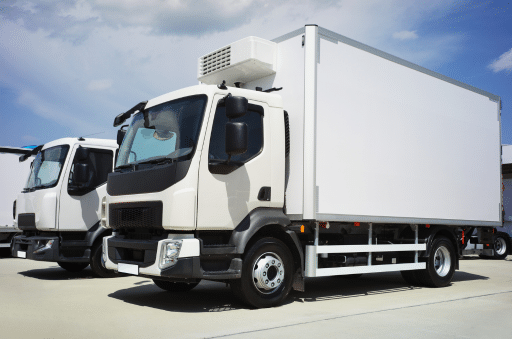What to Know About Hotshot Trucking
Melton Logistics – 10/17/2024
Hotshot trucking has gained popularity in recent years amongst owner operators, smaller trucking operations, and companies needing deliveries on the fly. In this post we’ll answer some of the common questions that come up around hot shot trucking, and the pros of cons of utilizing this type of transport.
What is a Hotshot Load?
Hotshot refers to a smaller, time-sensitive shipment that requires quick delivery. Hotshot loads are typically transported using smaller trucks, such as a Class 3, 4, or 6 medium-duty truck, rather than full-sized 18-wheelers. Normally these trucks are paired with a flatbed or gooseneck trailer.
How Are Hotshot Loads Different from Regular Truck Loads?
While the loads shipped via hotshot and those shipped through traditional truck means may be similar in contents, there are some key differences between the two.
Size of Load: Regular truckloads often involve freight that requires full semi-trailers, which can handle much larger and heavier shipments.
Speed: Hotshot trucking is synonymous with urgency. These loads are often more time-sensitive than standard freight. Shippers opt for hotshot services when they need fast, on-demand delivery, often within tight windows.
Equipment: Hotshot truckers typically use Class 3 to Class 5 trucks with flatbed trailers. On the other hand, standard truckloads use Class 8 semi-trucks.
Flexibility: Hotshot loads are more flexible in terms of routes and cargo types. Because they use smaller vehicles, they can access areas and routes where large semi-trucks might have difficulties.
Are There Different Qualifications for Hotshot Drivers?
Yes, there are some differences in qualifications between hotshot drivers and traditional truck drivers. However, many of these differences will depend on the load being hauled instead of the vehicle type.
A major difference between hotshot drivers and truck drivers, is that loads registering below 10,000 lbs. don’t require a driver with a CDL to haul them. Loads that clock in over 10,000 lbs. but under 26,000 lbs. can be hauled in a Class 5 or lower truck if the driver possesses a Class C license.
How Should Shippers Utilize Hotshot Loads?
If your company is looking to utilize hotshot loads for business, it can be a strategic choice depending on the situation.
Here’s when hotshot might make sense:
Time-Sensitive Deliveries: If you need a delivery made quickly, and the load is too small to justify an entire truckload, hotshot services are ideal.
Remote or Hard-to-Reach Destinations: Hotshot trucks can access areas where larger trucks may face issues, such as construction sites or off-road locations.
Specialized Needs: Hotshot trucking can handle unique or specialized freight that needs more individualized attention than bulk shipments.

However, there are times when it might not be the best option:
Cost Sensitivity: Hotshot trucking tends to be more expensive per mile than traditional trucking, due to its on-demand and urgent nature. If timing isn’t a major factor in your load, it might be more sensible to book a traditional truckload solution.
Larger Loads: If your shipment is large enough to justify a full truckload, then regular trucking will often provide a better price-per-mile ratio.
Pros and Cons of Hauling Hotshot Loads
Pros:
High Demand: Many industries—like construction, agriculture, and energy—often need quick deliveries of smaller, critical items. This creates a consistent demand for hotshot services.
Flexibility: Hotshot drivers often have more control over their schedules and routes, making it a good option for those who need deliveries on short notice.
Specialized Needs: Hotshot trucking can handle unique or specialized freight that needs more individualized attention than bulk shipments
Cons:
Wear and Tear on Equipment: Hotshot trucks and trailers are smaller, but they’re often driven hard with tight delivery schedules, leading to increased maintenance or potentially faulty equipment.
Lower Load Volume: Because you’re hauling smaller loads, the cost per trip may be higher than what a traditional truckload could cost.
Weather and Road Conditions: Smaller vehicles can be more affected by bad weather or challenging road conditions compared to larger semi-trucks designed for long-haul freight.
Overall, the decision to utilize hotshot trucking for your shipments is going to depend entirely on the load itself. Hotshot trucking serves a specific and niche within the logistics industry and offers flexibility and speed for shippers. At Melton Logistics, we can arrange any kind of shipment your business requires; learn more about the services we offer on our services page.
